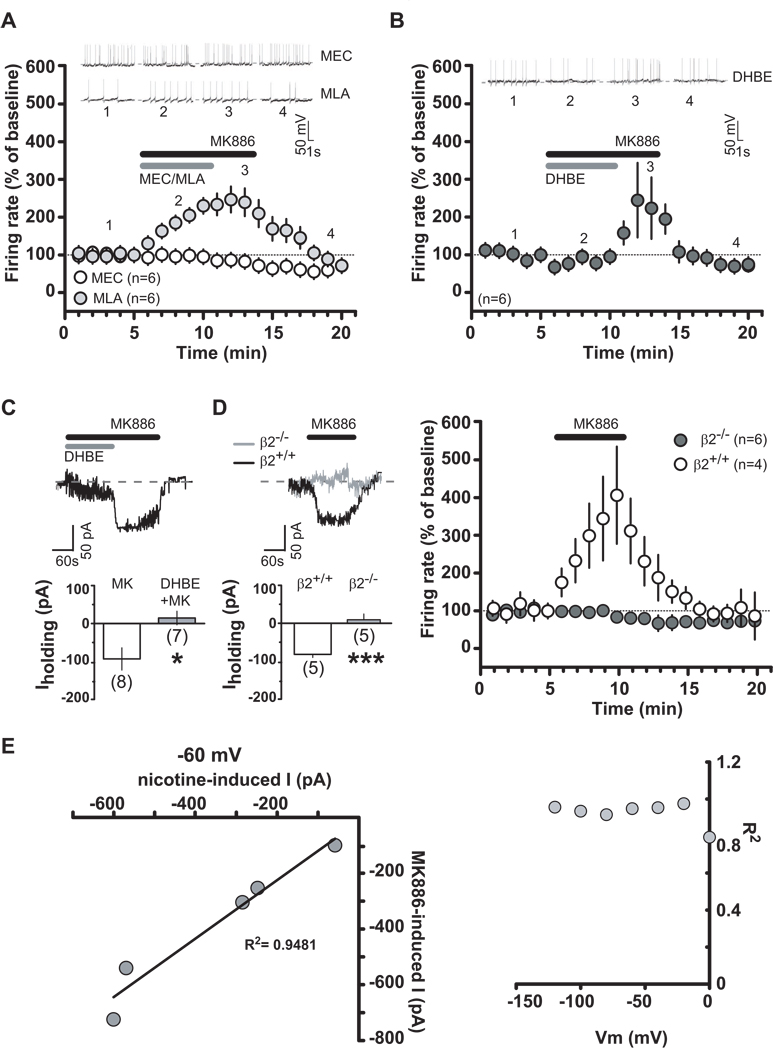Figure 2.
MK886 enhances dopamine neuron activity through α4β2-nAChRs. (A and B) Time course of MK886 effect, alone or together with mecamylamine (MEC) (100 µM), methyllycaconitine (MLA) (5 nM) or dihydro-β-erythroidine (DHBE) (1 µM), on dopamine neuron activity. Grey and black bars represent time of nAChR antagonist or MK886 application, respectively. Insets show representative traces of dopamine neuron frequency. (C) Bar graph illustrating DHBE mean effect on MK886-induced inward current. Inset shows representative DHBE+MK886 effect on dopamine cell. Grey and black bars represent the time of DHBE and MK886 application, respectively. (D) MK886 effects on dopamine neurons in β2−/− and β2+/+ mice under voltage-clamp (left panel) and current-clamp (right panel) modes. Inset shows a representative MK886 effect. (E) Left panel, Magnitude of currents induced by nicotine plotted as function of those induced by MK886 at membrane potential of -60 mV. Data fit by linear regression with r2 = 0.9481 (p < 0.001). Right panel, R2 for five cells in f plotted as a function of voltage membrane. Numbers above bars indicate n values. Data expressed as mean ± SEM. *p < 0.05, ***p < 0.0005.

